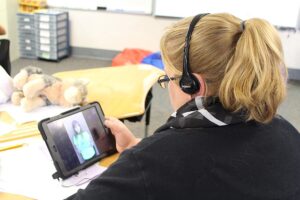“There are many ways to connect – in person with our families at home, but also using email, phone, texts, video calling, conference calls and social media. Circles can happen virtually,.IIRP”
Category: Mental Health and Absenteeism
Mar 26
Caring adult or frontline hero, here are some good ideas for sustaining professionals in traumatic times
Kevin Cameron
a) First principle of crisis response: model calmness.
b) Understand the circularity between micro and macro dynamics.
c) Our bodies have become weaponized.
d) Treat the big things big and the little things little.
e) Make good use of unused human resources.
f) Over-functioners/Under-functioners and Natural leaders.
g) Apologize.
h) Self-Care Strategies in Appendix 1
Mar 26
With school closures and many online classes, schools need to focus on connection and contact with students not just attendance
Connections with students in virtual courses will be essential during the COVID 19 pandemic
Mar 23
When schools close, the safety and well being of students is affected, particularly those who are homeless
“For children and youth experiencing homelessness, early childhood settings and school may be the only source of food, education, health and mental health services, caring adults, and a safe place to be during the day. “
Mar 20
Caring for the caring adult – sleep, physical exercise, staying virtually connected and good deeds are all important during the current pandemic
The COVID-19 pandemic is increasing everyone’s anxiety which makes sleep, schedules, exercise, virtual connection and good deeds essential to mental wellness.
Mar 06
Kids knocking over class furniture, hitting others and physically harming self and others – all symptoms of trauma
One Ohio District’s experiences of dealing with student trauma in Early Childhood Education demonstrates how early identification, early intervention and multi-agency treatment programs can work. “Evidence suggests it works: children’s trauma symptoms, including anxiety, depression and post-traumatic stress disorder, are on average reduced by 30 to 50 percent over one school year.”
Feb 28
Trauma informed practice must look to individual and systemic causes of trauma
Without a systemic lens, trauma-informed practice can draw teachers’ attention to the trauma behaviors that students exhibit, potentially pathologizing children for the very behaviors that research on trauma has illuminated and then blaming their families for their trauma.”
Feb 22
Students far more likely to seek mental health treatment at school if at all, US report says, putting schools in underfunded situation
One of the underlying causes of chronic student absenteeism is a mental health crisis. Recent research makes primary recommendations for early warning systems in schools and reintegration plans after prolonged absences.











